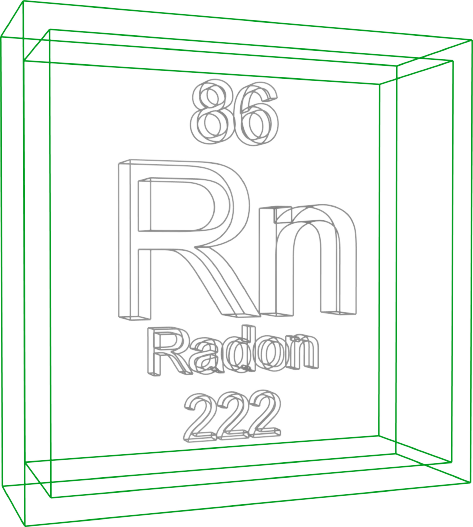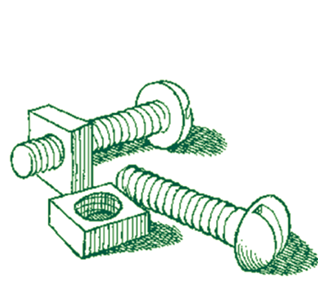What is Radon?
Radon is a radioactive gas released from the decay of uranium in the earth’s rocks.
It is colorless, odorless and cannot be detected by our senses except by special detectors.
As radon is released from the ground into the atmosphere, it mixes with the ambient air so that its concentration is too low to be dangerous.
In contrast, when radon enters indoor spaces, such as buildings, its concentration increases.

Why is Radon dangerous?
Through breathing, radon and its short-lived radioactive decay products enter the lungs and irradiate them.
Because radon is chemically inert and its half-life is long compared to the time of breathing, only a very small percentage of the inhaled radon has time to decay in the lungs.
The effects on the respiratory system are mostly due to the radon decay products.
The radon decay products (Po-218, Pb-214, Bi-214 and Po-214) are not inert and shortly after their formation they attach to suspended particles (aerosol), which upon inhalation are deposited on the pulmonary epithelium.
This is followed by their decay inside the lungs, with the emission of mainly α-particles, which can cause damage to the sensitive alveoli of the lung, thus increasing the possibility of developing cancer.
![AdobeStock_94382157 [Converted] AdobeStock_94382157 [Converted]](https://www.health-solutions.gr/wp-content/uploads/2022/09/AdobeStock_94382157-Converted-1-1024x727.png)
What are the symptoms of exposure?
Epidemiological studies confirm that indoor radon exposure increases the risk of lung cancer. Other effects have not been confirmed.
Three epidemiological studies (Darby et al., 2005; Krewski et al., 2006; Lubin et al., 2004), in Europe, North America and China gave similar results estimating a minimum 8% increase in the risk of lung cancer for a 100 Bq/m³ increase in radon concentration.
How does radon get into buildings?
- From the cracks that exist in the ground slab and the floor of the buildings.
- From gaps or cracks in walls and wall-floor joints.
- From the entry points of the water supply and drainage pipes.
- From gaps in doors and windows.
- From the water supply.
Radon concentration measurements
Measuring the radon concentration is the only way to get an estimate of the risk from radon.
Most measurement systems rely on the detection of α-particles produced by the Radon radioisotope during its radioactive decay.
Special detectors, about the size of a coffee mug, are placed in critical parts of the building from a few days to months depending on the type of measurement, then they are returned to the laboratory for processing and measurement. The results are announced written.
HS2 conducts the following types of radon concentration measurements:
- seven (7) days
- one (1) month
- three (3) months
- one (1) year
The cost of the measurement is €20 + VAT per detector, regardless of the duration of the measurement. The number of the detectors that will be needed depends on the area, floors and layout of the place to be measured. Usually, 2-4 detectors are enough for a residence.
Measurement Results
The result of the measurement gives us the value of the radon concentration in Bq/m³
1 Bq/m³ means a decay per second of one Radon nucleus per cubic meter with simultaneous emission of α-particles.
According to the Presidential Decree 101/2018 – Official Gazette 194/A/20-11-2018, article 54 and 74, the national reference level for indoor radon concentration in buildings has been set as 300 Bq/m³
Actions after the measurement
If the measurement result is greater than the reference level, we should act.
There are three general ways in which we achieve the reduction of radon concentration in indoor spaces.
- With the frequent ventilation of the area.
- By repairing the possible entry points of radon.
- The installation of a system that will channel the radon out of our space, a form of air suction system.



